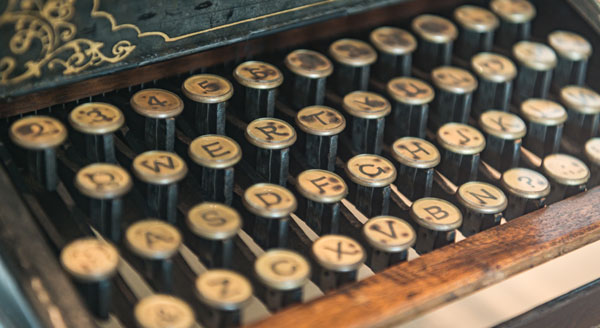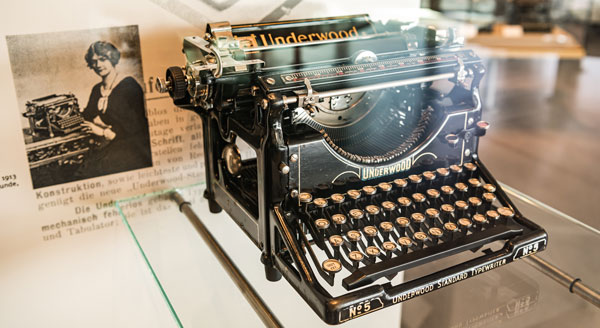The history of the typewriter, which is documented comprehensively in the museum with numerous exhibits, is a good example of the laborious path from an idea to a standard industrial product.
Writing look typeset and forgery-proof
To write like typeset and to allow the blind to write - these wishes led to the idea of the typewriter. In 1714, Henry Mill, an Englishman, was granted a patent for the idea of an "artificial machine or method" which would make writing look typeset and be forgery-proof. In 1808, an Italian named Pellegrino Turri built the first real typewriter for a blind countess. In the 1850s attempts to turn the typewriter into a marketable product failed. The first commercial success was the "writing ball" which was designed by Pastor Malling Hansen, a Dane. From 1870 on, it was made by hand in small batches.
QWERTY keyboard
True industrial production commenced in 1873 with the Sholes & Glidden TYPE WRITER which was manufactured by the Remington Arms Company in the USA. Today, we are still confronted with one of the many shortcomings of the Sholes & Glidden: the QWERTY keyboard (QWERTZ in Germany), named after the first six letters on the keyboard.
In 1878, Remington launched its Model No. 2. This model not only improved reliability but also incorporated a major innovation - the ability to switch between lower and upper case characters, or case shift as this is more commonly known.
The competition responded with keyboards in which there were separate keys for upper and lower case characters. This line of development turned out to be a dead end but another idea, namely making the written text visible, was incorporated in future developments despite initial short-comings in implementing this feature.
Underwood No. 1
Franz X. Wagner, an American of German extraction, patented his front-strike machine with fully visible writing in 1893. An entrepreneur named John T. Underwood brought this to market as the Underwood No. 1 in the USA in 1896. Its defects were eliminated by the turn of the century, and the technology of the Underwood No. 5 set the standard for over 60 years.

